A Second Panda Cub is Born at the Zoo (New Pictures)
After giving birth to one cub, the Zoo’s 17-year-old female panda, hours later, delivers a second cub
UPDATE August 24, 2015, 11:15 a.m.: The Zoo reports a "challenging night," when at 11 p.m., the mother giant panda Mei Xiang refused to put one cub down so that staff could swap it for the other cub. Mei Xiang kept that cub through the night and the other, the smaller cub, was bottle fed formula by the staff. "They were concerned," the Zoo reports, "that the smaller cub was not getting enough volume so they moved to tube feeding which went well and quickly." By morning, however, Mei Xiang allowed the cub swap to take place.
UPDATE August 23, 2015, 9:15 a.m.: In a news conference this morning at the National Zoo in Washington, D.C., a tired, but enthusiastic team of panda biologists, keepers and veterinarians recounted the moment of the historic second birth of the living twin that 17-year-old Mei Xiang delivered last night at 10:07, less than five hours after the first cub was born.
While observing the mother and her cub on a monitor, panda biologist Laurie Thompson heard Mei Xiang give a grunting noise that was similar to the noise the animal had made when the first cub was born. “Out popped another,” Thompson said.
The team watched Mei Xiang as she handled the two cubs, but it became clear that she was struggling to manage both of her charges, so the decision was made to pull one of the cubs from the new mother’s den.
The second born cub was retrieved and weighed and then later the two cubs were swapped out so that they could both nurse from the mother.
The process was well studied in China when researchers visited the Wolong Breeding Center in China. Zoo officials frequently travel to China for training and sharing of critical care information. In fact, the panda team was in contact with the facility overnight working on care and protocol.
To swap panda cubs, one keeper reported: “We first tried to use high value items to distract her then we used a recording of the other cub vocalizing, but she wasn’t responsive to that.”
“Finally we used the actual cub we had to allow her to come to it.” Mei Xiang then placed the one cub she had down and moved over to pick up the other. Keepers then retrieved the first.
Significantly, today is Bao Bao’s second birthday. She was born on August 23, 2013 as a surviving cub of a set of twins. The other cub was still born. The only other pandas to deliver cubs in the United States were the National Zoo’s Ling Ling, which delivered a pair on July 23, 1987, but they did not survive. And at the zoo in Atlanta, the female panda Lun Lun delivered twins on July 15, 2013, but those did survive.
The Smithsonian's National Zoo reports that staff are providing round the clock care of the mother and her cubs and that a fresh team is reporting for duty after the exciting overnight events.
“Mei Xiang always throws us for a loop,” said one exhausted team member, but we’re going “on adrenaline,” she told the assembled media and crew this morning at the press event.
Last night at 11:30 p.m. via Twitter, Zoo officials confirmed the birth of a second cub—only the third time a giant panda living in the United States has given birth to twins. The second cub, the Zoo reports, is "vocalizing very well and appears healthy."
A team of three panda keepers was able to pull one of the cubs from the mother's den for an examination, but were unable to determine which cub it had. The cub was weighed—138 grams—and photographed, while the other remained in the female panda's care.
Keepers plan to swap one cub for the other so that each can nurse while the other is bottle fed and kept warm in an incubator.
Yesterday evening at 5:34, the Zoo's 17-year-old panda delivered the first of the two cubs and the event was recorded on the panda cam. Today, veterinarians examined the first cub. Here's video of the birth and the cub's examination. Stay tuned for further developments.
/https://tf-cmsv2-smithsonianmag-media.s3.amazonaws.com/accounts/headshot/Beth_Head_Shot_High_Res-14-v2.png)
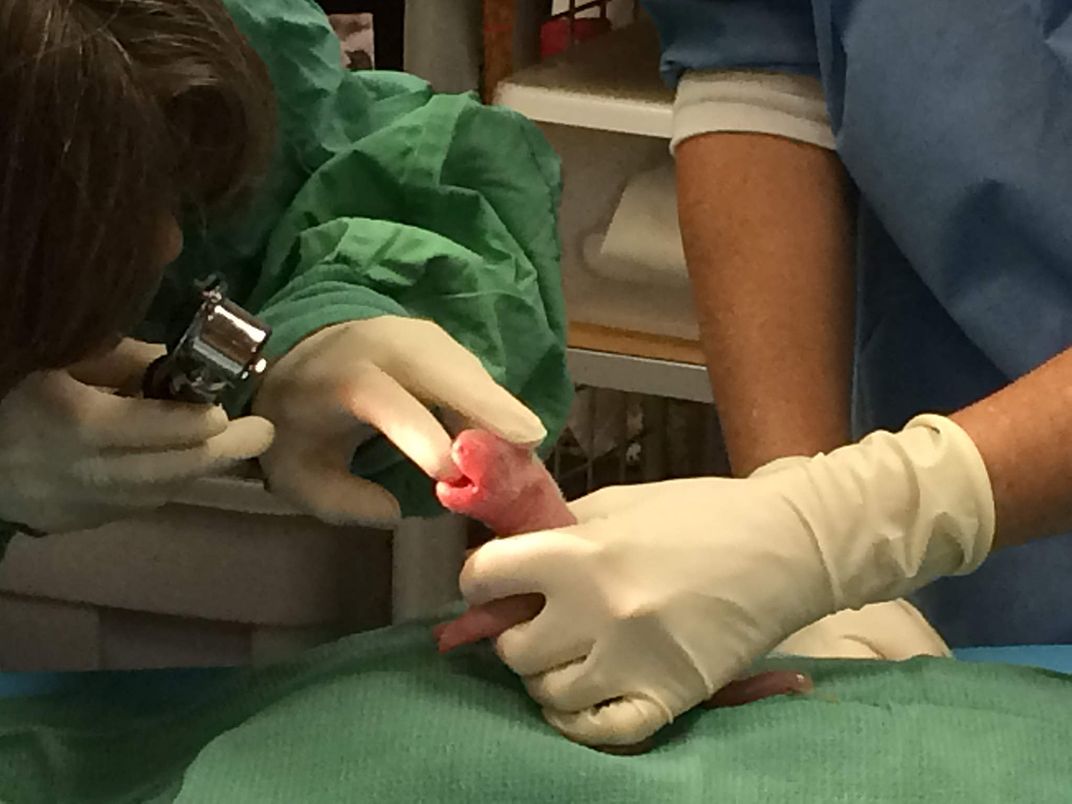
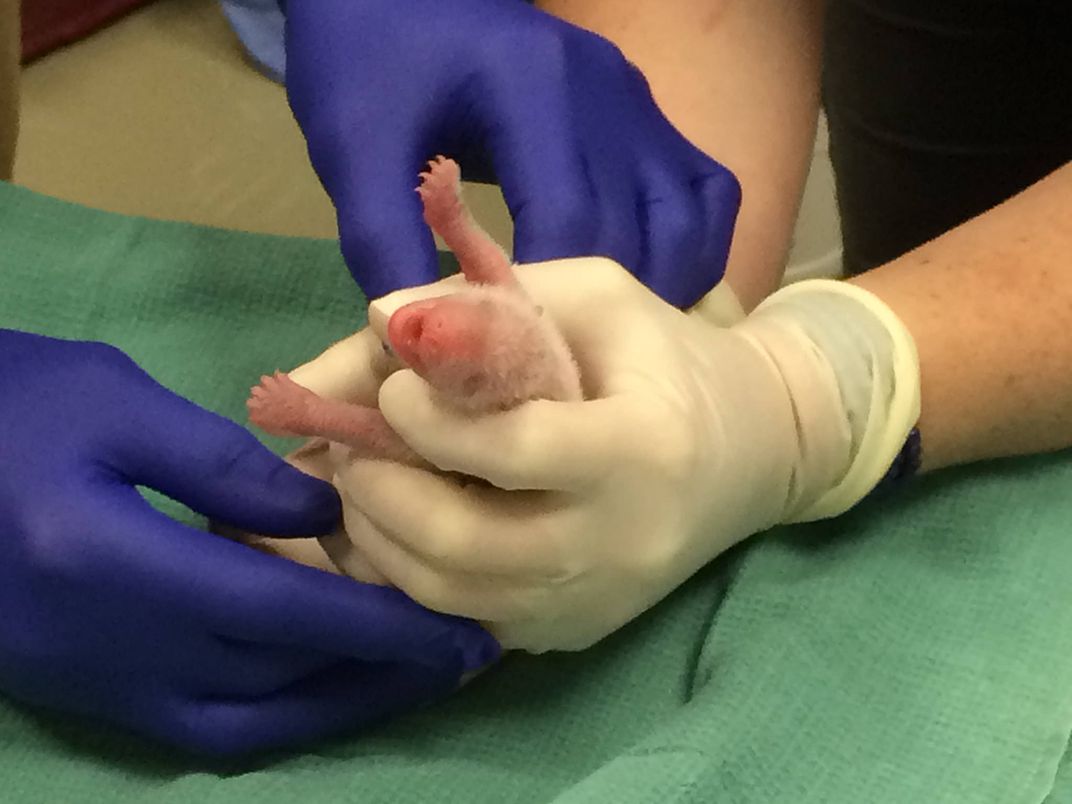
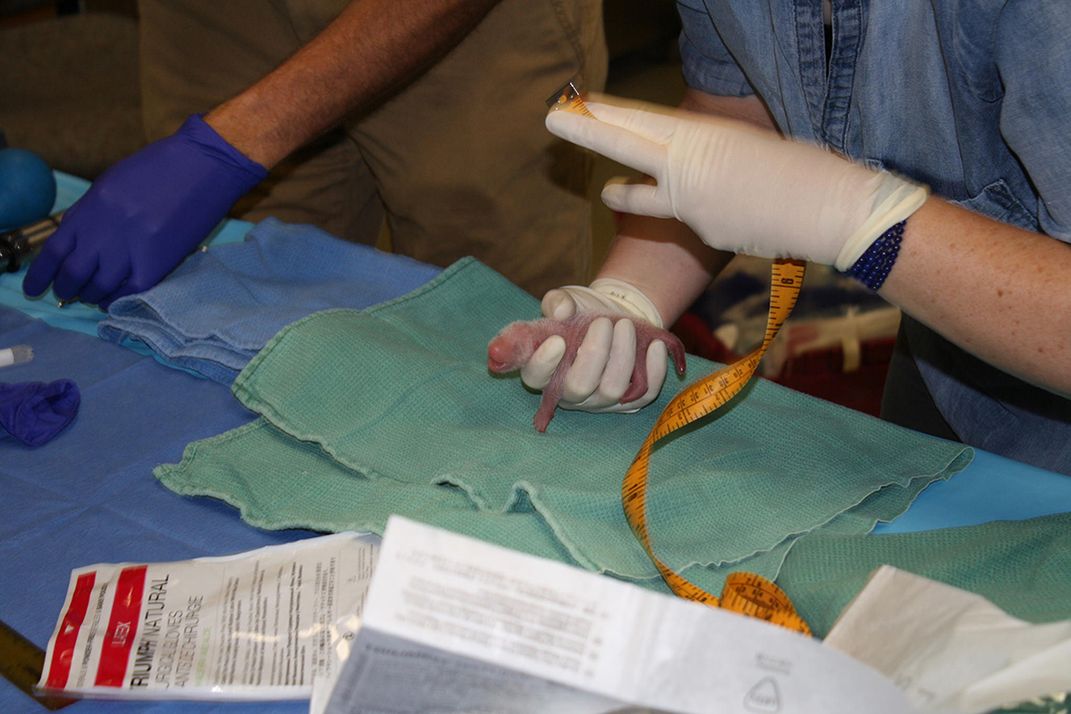
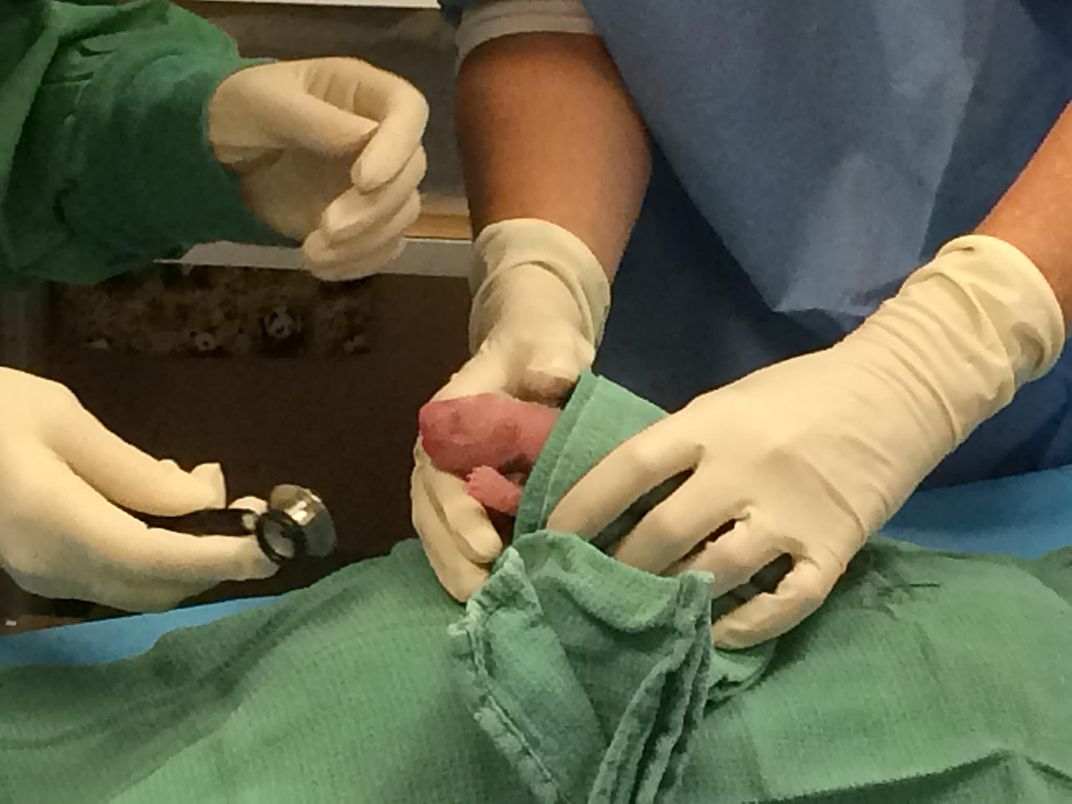
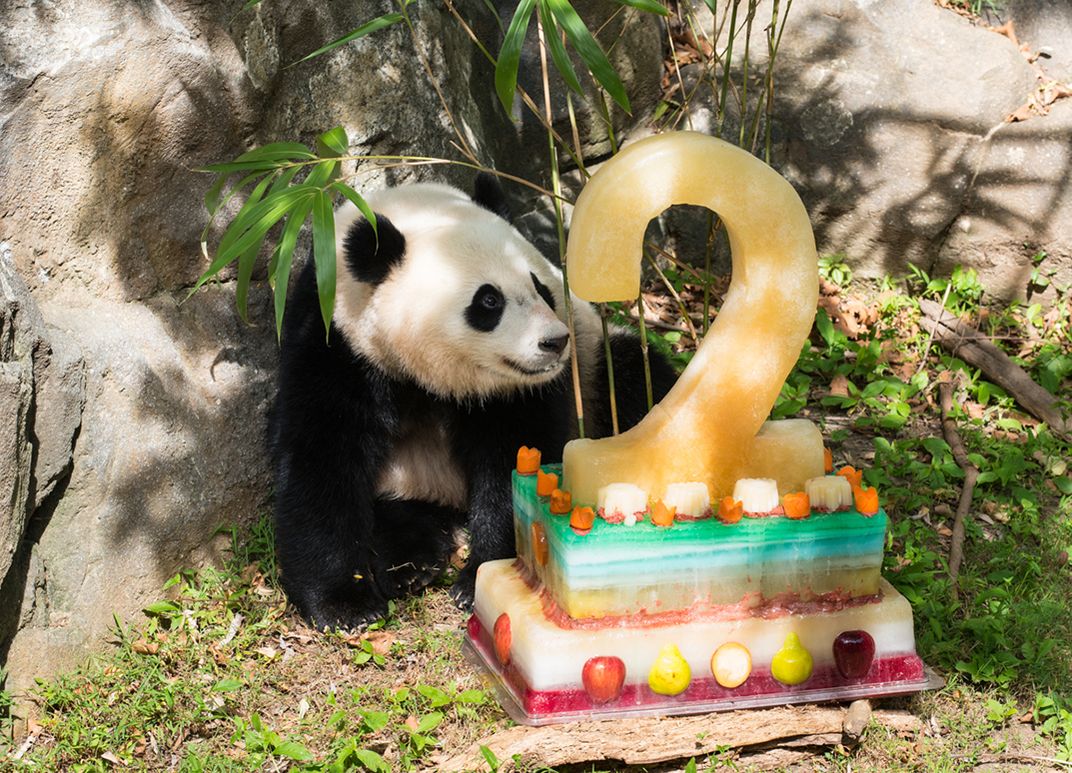
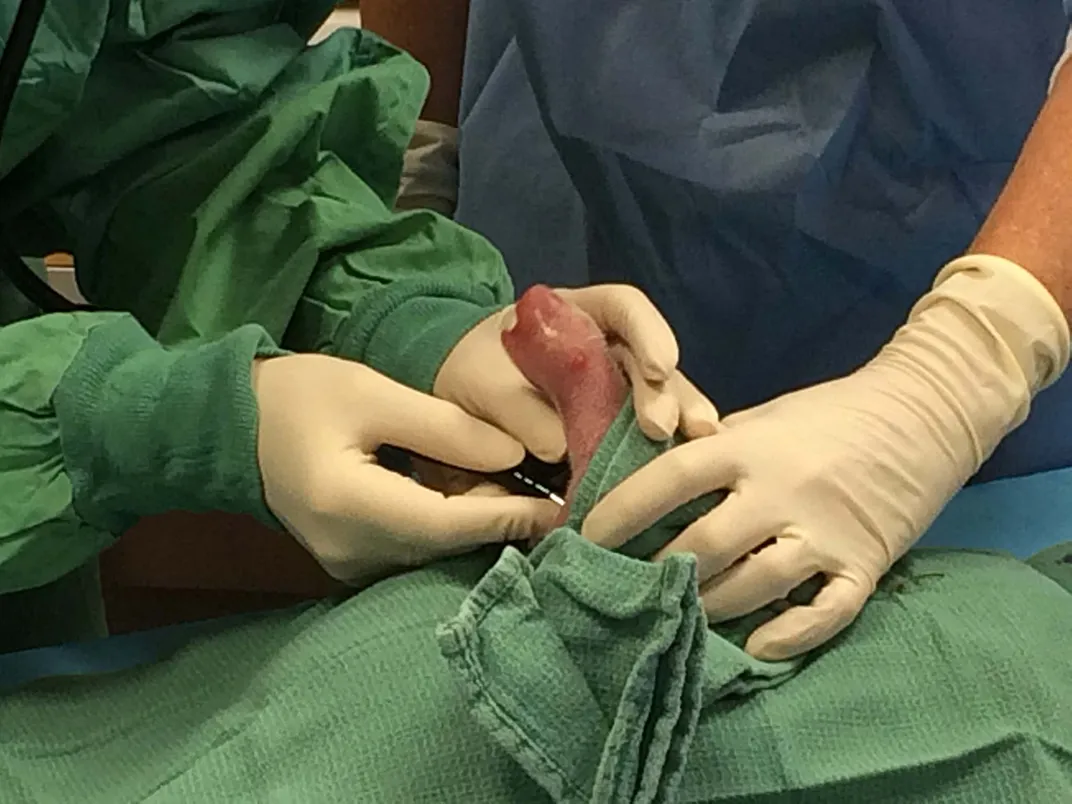
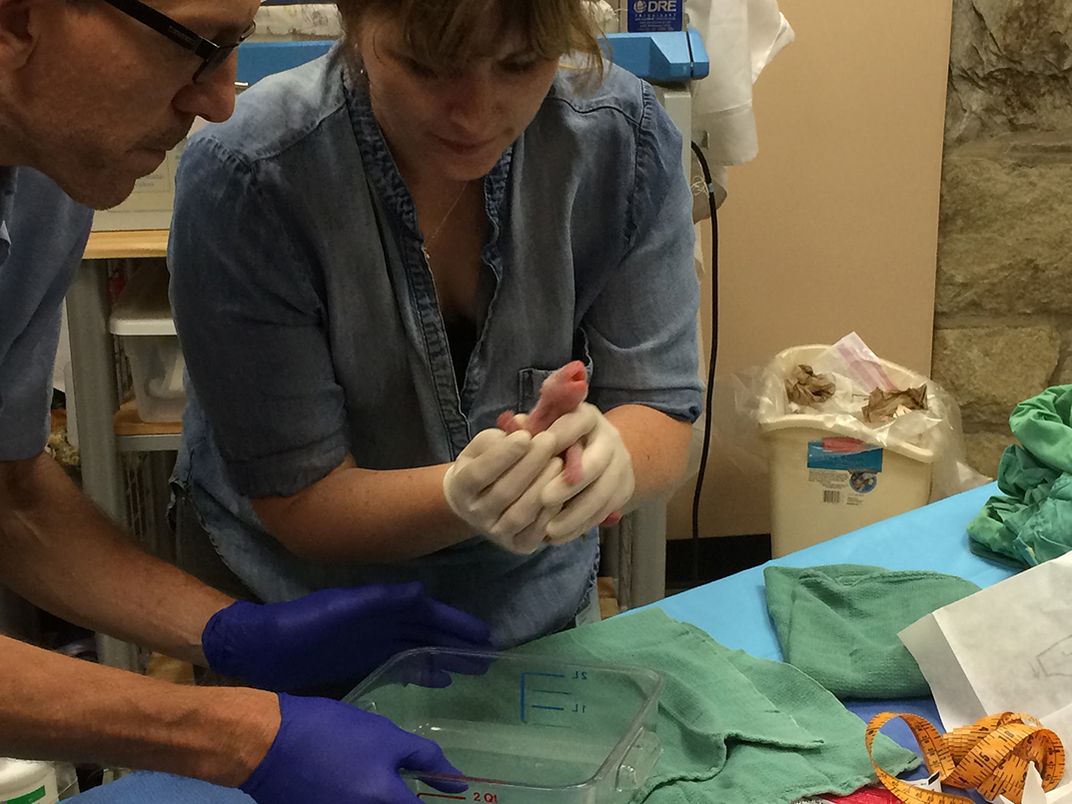
/https://tf-cmsv2-smithsonianmag-media.s3.amazonaws.com/filer/cb/4f/cb4f6be4-c4c1-437e-b187-174eb378a0d6/2019128559384195855e7kweb.jpg)
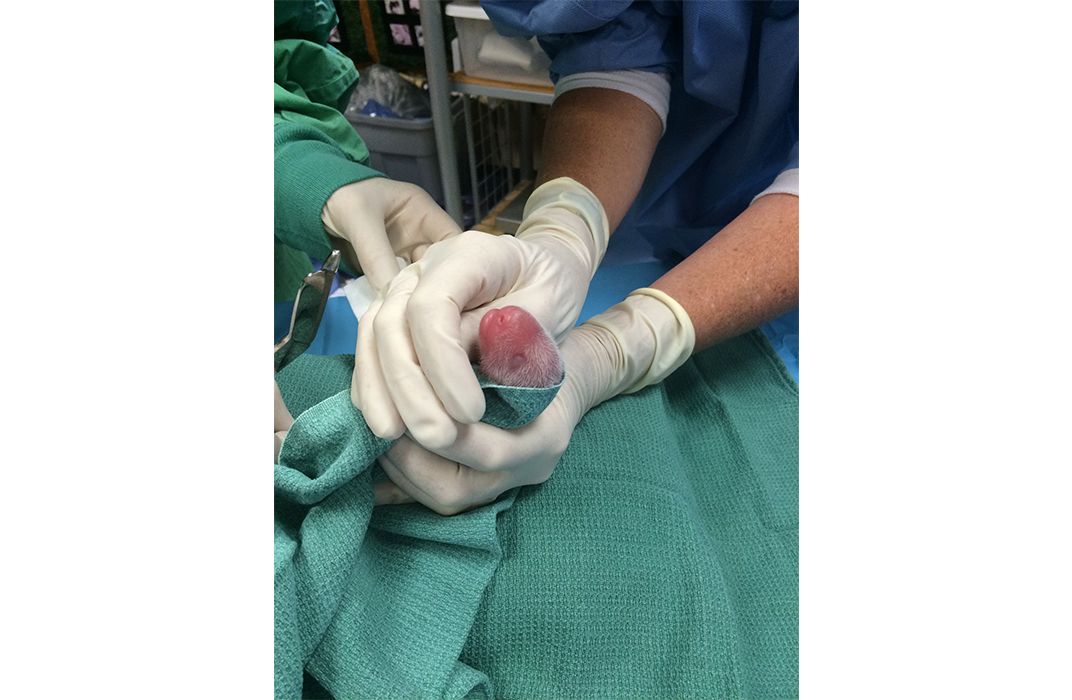



/https://tf-cmsv2-smithsonianmag-media.s3.amazonaws.com/accounts/headshot/Beth_Head_Shot_High_Res-14-v2.png)